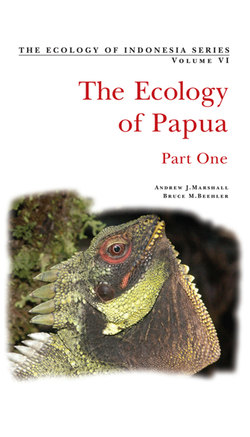Читать книгу Ecology of Indonesian Papua Part One - Andrew J. Marshall - Страница 13
На сайте Литреса книга снята с продажи.
ОглавлениеPreface
PAPUA IS THE LARGEST ISLAND in Indonesia (area of 41.48 million ha), with the smallest population compared to other islands of Indonesia. More than 2.6 million people live in Papua, and almost 75% of the population lives in rural areas. Since the early 1990s, Papua has experienced the highest population growth rate of all Indonesian provinces, which stands at over 3% annually. This is partly a result of high birth rate and influx migration from other regions in Indonesia.
Papua is endowed with an amazing range of diverse and unusual ecosystems, including glaciers, alpine meadows, cloud forests, lowland forests, savannahs, mangrove forests, coral reefs, and seagrass beds. Well known for its vital tropical rainforest, with the tallest tropical trees and vast biodiversity, Papua plays a pivotal role in Indonesia’s biodiversity, contributing to the country’s status as one of the biologically richest countries in the world and hosting around 50% of all of Indonesia’s biodiversity. Papua is home to 15,000–20,000 plants (55% endemic), 602 birds (52% endemic), 125 mammal (58% endemic), and 223 reptiles (35% endemic). Many of these species are endemic to the island, including birds of paradise, tree kangaroos, rainbow fishes, birdwing butterflies, various orchids, and thousands of other plants and animals. In February 2006, a team of scientists exploring the Foja Mountains discovered numerous new species of birds, butter-flies, amphibians, and plants, including a species of rhododendron that may have the largest bloom of the genus.
However, biodiversity in Papua is facing very serious problems, such as biodiversity loss and ecological degradation. Ecological threats include logging—induced deforestation, forest conversion into agricultural plantation (especially oil palm), small holder agricultural conversion, the introduction and potential spread of non-native alien species such as the Crab-eating Macaque, which preys on and competes with indigenous species, as well as water pollution from oil and mining operations.
I would like to convey my appreciation to the team, especially to the authors, who have provided support and brought together such detailed and fruitful information. I would also like to thank all institution, researchers, universities, nongovernmental organizations, local communities, and all other parties who got involved and participated in the development of this book.
I hope this book will serve as a source of information and will give invaluable contributions to the improvement of awareness and knowledge on biodiversity. Finally, I hope the important essence of biodiversity is taken into account in every decision-making process, paving the way toward sustainable development in Papua.
Jakarta, July 2006
Ir. Rachmat Witoclar
State Minister for Environment
